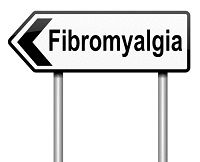Article
Research Highlights Altered CNS Processing for Fibromyalgia Patients
Author(s):
Researchers investigated cerebral activation in patients with fibromyalgia (FMS) using functional near-infrared spectroscopy, and discovered altered central nervous processing in patients with FMS, as well as a distinction between FMS and major depression.

While the clinical presentation of fibromyalgia syndrome (FMS) is by now well-known, its etiology is not. A new German study in BMC Neurology investigated cerebral activation of FMS patients by functional near-infrared spectroscopy (fNIRS), and discovered altered central nervous processing in patients with FMS, as well as a distinction between FMS and major depression. It is among the first clinical studies to employ fNIRS.
Earlier research has suggested that altered processing of nociceptive stimuli in the central nervous system (CNS) is involved in FMS pain. fNIRS is an easily applicable imaging technique that has no known side effects. It allows the investigation of cerebral activity as a function of cortical concentration changes of oxygenated and deoxygenated hemoglobin.
“Based on data from functional magnetic resonance imaging (fMRI) studies, we hypothesized that pain associated cortical activation in FMS patients is stronger and has a wider spatial distribution compared to controls that can be detected with fNIRS,” the study authors noted. “To test this hypothesis we performed fNIRS under painful stimulation in groups of patients with FMS, unipolar major depression (MD) without pain, and healthy controls.”
The researchers applied two stimulation paradigms: a) painful pressure stimulation at the dorsal forearm; and b) verbal fluency test (VFT) to 25 FMS patients. Ten of those patients also suffered from MD without pain. Thirty-five controls were included in the study as well. All patients underwent neurological examination and all subjects were investigated with questionnaires (pain, depression, FMS, empathy).
FMS patients had lower-pressure pain thresholds than patients with MD and controls (p < 0.001), and reported higher pain intensity (p < 0.001). Upon unilateral pressure pain stimulation, fNIRS recordings revealed increased bilateral cortical activation in FMS patients compared to controls (p < 0.05). FMS patients also displayed a stronger contralateral activity over the dorsolateral prefrontal cortex in direct comparison to patients with MD (p < 0.05).
“While all three groups performed equally well in the VFT, a frontal deficit in cortical activation was only found in patients with depression (p < 0.05). Performance and cortical activation correlated negatively in FMS patients (p < 0.05) and positively in patients with MD (p < 0.05),” the researchers observed.
“Our study adds to the growing evidence of an augmented cerebral activation upon painful stimulation as one contributor to pain in FMS,” said the researchers. “Additionally, clear differences in cortical activation during a cognitive task could be observed between patients suffering from FMS and MD.”
The findings are important, because there is still some debate among clinicians regarding whether FMS is an independent entity or a form of major depression (MD). According to the study authors, “We show that FMS patients differ in their cortical activity from patients with MD but without pain by a) stronger and bilateral cortical activation upon painful stimulation, b) normal cortical activation during executive functions (VFT), and c) a higher cortical activation during the letter task of the VFT correlating with low performance.”
Study limitations include the relatively small sample size, which might be the reason for the lack of correlation between pain intensities or thresholds compared to cortical activity as measured by fNIRS. Also, the research did not analyze a group of patients with concomitant depression and pain.




